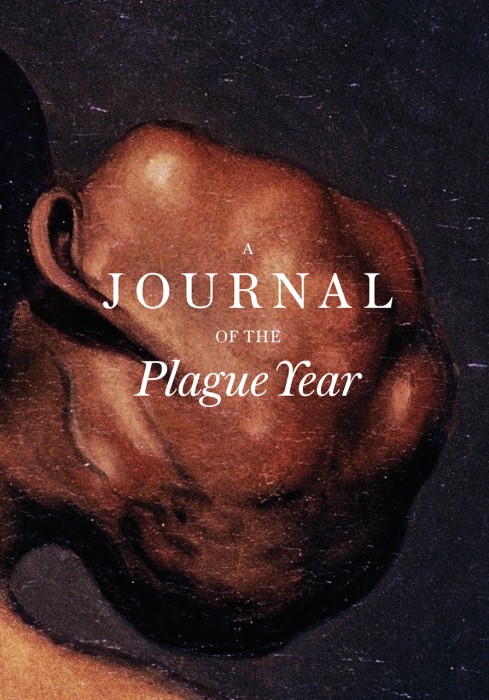28 July 2015
Book Launch
Date and Time: 28 July 2015, 6:30pm – 8:30pm
Venue: Connecting Space Hong Kong (Directions)
Description
Connecting Space Hong Kong is pleased to host “A Journal of the Plague Year” Book Launch by Para Site.
The evening will feature an introduction by the editors Cosmin Costinas, Inti Guerrero, and Lesley Ma, followed by talks by contributors and artists Natalia S. H. Chan, Fionnuala McHugh, Lee Kit, and Sara Wong. The publication, co-published with Sternberg Press and designed by Project Projects, New York, is based on the highly acclaimed exhibition “A Journal of the Plague Year. Fear, Ghosts, Rebels. SARS, Leslie and the Hong Kong history,” curated by Cosmin Costinas and Inti Guerrero, and presented at Para Site in 2013, and subsequently at TheCube Project Space in Taipei, Arko Art Center in Seoul and Kadist Art Foundation and The Lab in San Francisco.
“A Journal of the Plague Year” critically analyzes historical and contemporary imaginations and politics of fear in the face of disease and the specter of contamination in society and culture. Scholars, artists, novelists, and journalists depart from Hong Kong’s history of epidemic—the most recent being the SARS outbreak of 2003, shortly followed by the tragic death of pan-Asian pop icon Leslie Cheung, and tackle the galvanizing power and the varied perceptions of contagion in the context of lingering histories, myths, anxieties, and memories across geographies. The essay by Costinas and Guerrero introduces the many layers and tentacles of the project. The disappearance of the perished and appearance of ghostly spaces are represented in the poetic storytelling of Dung Kai-cheung’s “Atlas: The Archaeology of an Imaginary City,” while excerpts from Shih Shu-ching’s literary masterpiece, “City of the Queen: A Novel of Colonial Hong Kong,” vividly portray the interwoven social relations and colonial structures during the time of plague. Artist James T. Hong contributes an exposé on disease, race, purity, and cleansing; writer and curator Xiaoyu Weng departs from the stereotypical iconography for Chinese immigrants appearing in the print media of the 1910s in California, in an essay about yellow peril and artist Ming Wong’s recent works exploring the recurrent archetypes of Chinese and Asian identities in Hollywood films; artist Pak Sheung Chuen and writer Lawrence Pun discuss their personal memories of how protests, linked to the aftermath of SARS, transformed their ways of being in the world; Zuni Icosahedron’s humorous dramatic script The Phantom Mask visits the political cover ups and the political mood of parts of Hong Kong society at the time of the SARS crisis; journalist Fionnuala McHugh undertakes a deep analysis on the rhetoric of fear caused by the handling of the epidemic; Taiwanese film and art critic Austin Ming-Han Hsu explores the Anti-Chinese rhetoric in the public sphere of Hong Kong through an extensive reading of an installation by Ai Weiwei; cultural theorist Natalia S. H. Chan discusses the way in which the roles that Leslie Cheung played reflected, and arguably enhanced, the versatility of the city’s identity over the past decades, before and after the Handover; Chinese cultural studies scholar Michael Berry explores how epidemics and diseases like SARS and Ebola have been cast in Hong Kong cinema; and a detailed contextual introduction of five historic performances offers models of resistance and empowerment.
The publication will be available for purchase at the launch event for a special price of 250 HKD and sold at major art bookstores in Hong Kong, internationally, and online.
The event is kindly hosted by Connecting Space Hong Kong.
This book has been made possible through the generous support of The Robert H. N. Ho Family Foundation.
About The Robert H. N. Ho Family Foundation
Established in Hong Kong in 2005, The Robert H. N. Ho Family Foundation is a private philanthropic organization that seeks to foster and support Chinese arts and culture and to promote a deeper understanding of Buddhist teachings and their application in everyday life. In pursuit of that mission, the Foundation engages in strategic, long-term projects in Hong Kong and around the world to support efforts that make traditional Chinese arts accessible and relevant to different audiences. It also supports the creation of new works that brings innovative perspectives to the history of Chinese art, and that improves the quality and accessibility of scholarship on Chinese art. Guided by a belief that the insights of Buddhism have a vital role to play in approaching the challenges facing contemporary society, The Robert H. N. Ho Family Foundation has committed substantial resources to expanding the understanding, interpretation, and application of Buddhist philosophy.
《疫年日志》香港新書發表會暨座談
日期及時間 :2015年7月28日下午6時30分至8時30分
地點:Connecting Space Hong Kong (地圖)
Para Site藝術空間將於7月28日舉行 《疫年日志》香港新書發表會暨座談。當天將邀請本書編輯康喆明(Cosmin Costinas), Inti Guerrero與馬唯中,以及作家洛楓、Fionnuala McHugh和藝術家李傑、黃志恆出席與談。《疫年日志》由Para Site藝術空間與Sternberg Press聯合出版,並由紐約Project Projects擔任美術設計。該書以Para Site在2013年推出,由康喆明及Inti Guerrero共同策劃的「疫年日志:恐懼、鬼魂、叛軍、沙士、哥哥和香港的故事」展覽為脈絡,收錄專文、訪談及展覽圖檔紀錄。該展於香港推出後陸續巡迴至台北TheCube立方計劃空間、南韓Arko Art Center和三藩市Kadist Art Foundation及 The Lab展出。
《疫年日志》以批判角度分析歷年及近代疫症帶來對恐懼的想像和政治見解,以及傳染病的幽靈對當代文化與社會的影響。 獲邀撰稿的學者、藝術家、小說家及專欄記者從香港歷年的疫情病症出發,包括2003年爆發的沙士到亞太區流行偶像張國榮逝世的悲劇,從跨地域的歷史軸線、神話、焦慮和記憶的文本,拆解疫症傳染的強大力量和多重觀感。 康喆明及Inti Guerrero的專文涉及了展覽的不同層面及觸角;董啟章在頗富詩意的《地圖集》中描繪了死者的消逝和幽魂空間的再現;而節錄自文學家施叔青大作《香港三部曲》的篇章,則生動地描寫了疫症蔓延時期錯綜複雜的社會關係與殖民結構。 藝術家洪子健談論疾病、種族、純粹和淨化之間的關係;作家與策展人翁笑雨則從1910年代美國加州印刷物中對中國移民帶有偏見的刻板印象出發,就「黃禍」以及藝術家黃漢明作品中,對荷里活電影裡常見的華人及亞洲人的身份原型現象進行探討;藝術家白雙全及作家潘國靈暢談他們記憶中對SARS的抗爭,以及這段記憶如何改變他們立身處世的態度。進念.二十面體以幽默的筆法撰寫了劇本《The Phantom Mask》,重訪沙士危機爆發時政府如何隱瞞疫情,以及當時香港社會的政治氛圍;專欄記者Fionnuala McHugh深入分析在面對疫症時引起的社會恐慌;台灣電影及藝術評論人徐明瀚則透過分析艾未未的裝置作品,探討香港普羅大眾的反中情緒;文化評論家洛楓評論影星張國榮扮演的角色及其在回歸前後數十年,對香港身份包容多元性所造成的影響;中國文化研究學者Michael Berry探索香港電影如何詮釋沙士及伊波拉等疫症和疾病。此外本書也詳細介紹歷史上五項重要的行為藝術如何對日後抗爭及行動組織立下典範。
發表會當日將販售本書,同時也可於香港、海外及網上的各大藝術書店購買,售價為250HKD。
本次活動由Connecting Space 主辦。
本書由何鴻毅家族基金贊助出版。
關於何鴻毅家族基金
成立於2005年的何鴻毅家族基金,為香港獨立慈善團體,一直致力推動中華文化藝術,並提倡佛學教育與實踐。為此,基金在香港以至世界各地倡導策略性長期計劃,透過贊助,向不同文化地域推廣傳統中國藝術。基金亦鼓勵創作,為中國藝術史注入嶄新觀點,深化同時普及中國藝術的學術研究。此外,基金深信佛教哲學可幫助現今社會面對各種挑戰,因此投放大量資源,促進社會對佛學的理解、詮釋和應用。
